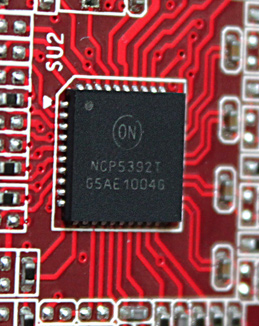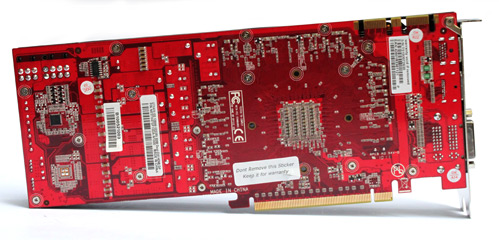Index
Page 3 of 10
A closer look at Gainward GTX 470 GS
We have in our hands one of the first GTX 470 Golden Sample cards, so it’s not quite on the shelves yet, but we know that it will be priced about €15-20 higher than reference versions. Reference GTX 470 cards are currently priced at about €310, here.
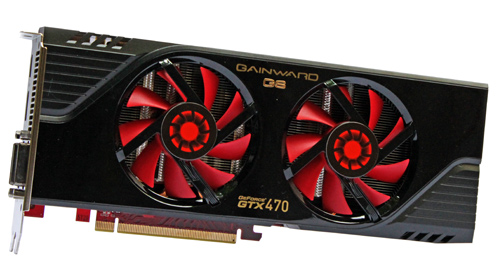
Gainward GTX 470 Golden Sample’s PCB is a bit longer than the reference GTX 470’s PCB, so you might want to check for compatibility with your case. Golden Sample is 26.7cm (10.5’’) long whereas the reference card is 24.1cm (9.5’’).
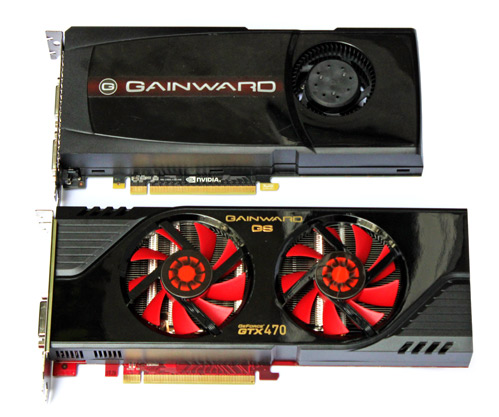
Gainward Golden Sample's cooler uses two 80mm fans. Note that most air stays within the case with only a fraction of hot air leaving the case via I/O outlets. While the cooler still cools much better than the reference once, you still might want to make sure that your in-case airflow is adequate,
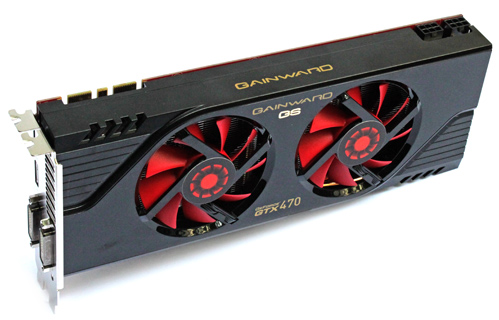
Gainward GTX 470 GS cooling is two slots wide, just like on the reference GTX 470 card.
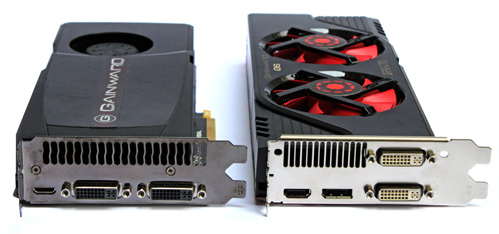
Due to lower airflow around the I/O panel, there was no need for leaving a slot reserved for air outlets, which is the case with reference card. Instead, Gainward put four video outs on its card.
The reference card uses mini-HDMI connector (which naturally requires a special cable), whereas the GTX 470 Golden Sample uses a standard HDMi connector, two dual-link DVIs and one DisplayPort connector. Gainward also included DVI-to-VGA dongle in the box.
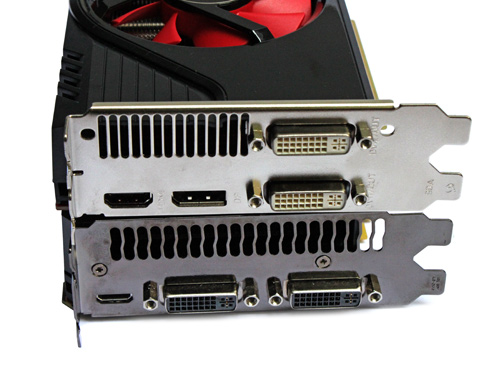
Gainward’s GTX 470 Golden Sample, GTX 470 Good and GTX 465 Good come with four video outs each, which makes these cards video-out champs among Fermi cards. Unfortunately, that won’t do you much good if you want more than two monitors at the same time, as GF100 won’t allow for more than two video outs simultaneously. The picture below shows GTX 470 GS and GTX 465 Good cards.

Fermi cards need no SPDIF cable; audio is routed via PCIe bus. HDMI interface is HDMI 1.3a compatible.
The base of GTX 470 GS’ cooling is a copper base with three heatpipes which route the heat to the large aluminum heatsink.
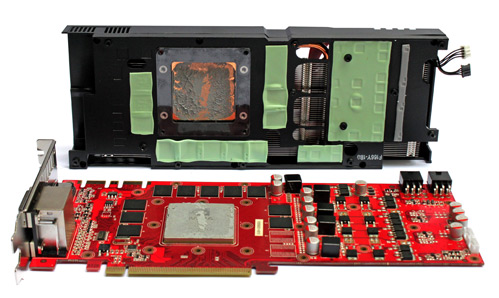
The GTX 465’s cooler takes care of memory as well as power regulation circuitry. The green areas you see on the picture are thermal components which are placed to be in direct contact with various PCB components.
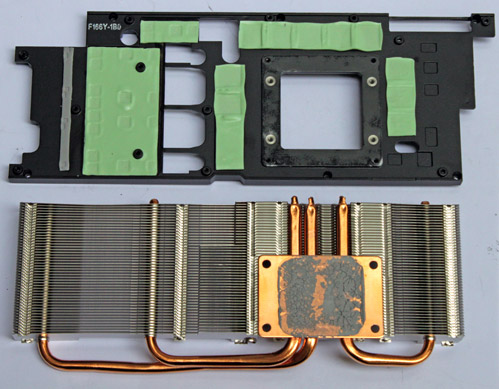
Nvidia uses GDDR5 memory on its GTX 400 cards. Gainward opted on Samsung K4G10325FE-HC05 memory rated at 1000MHz (4000MHz GDDR5 effectively). The card packs 1280MB of GDDR5 memory whereas the faster model, GTX 480, comes with 1536MB.
The reference GTX 470’s memory runs at 837MHz (3348MHz effectively), which coupled with the 320-bit memory bus gives a bandwidth of 133.9GB/s. Gainward’s GTX 470 GS has the upper hand here as its memory is clocked at 850MHz (3400MHz effectively).
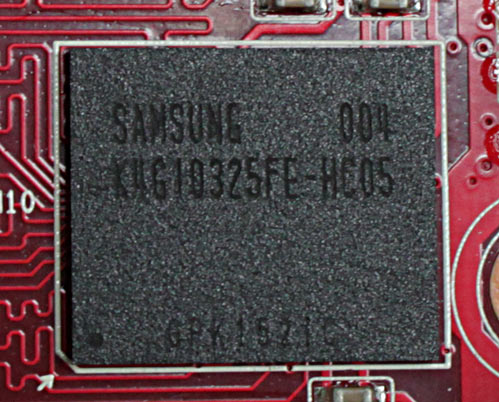
If you take a look at the base of the cooler, you’ll see that one heatpipe is missing.
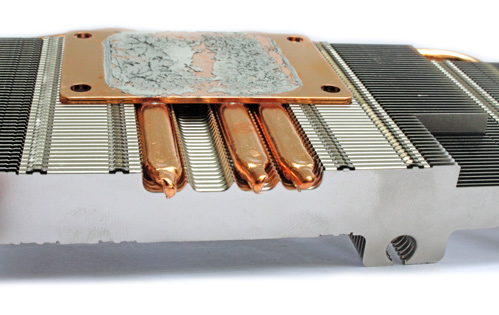
It’s obvious that the cooler is made with four heatpipes in mind. The four-heatpipe cooler will surely be used with the, yet unannounced GTX 480.
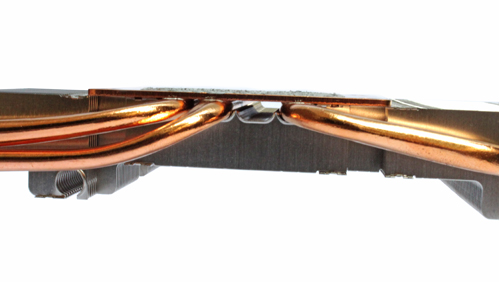
The fans are a part of the plastic hood that covers the heatsink.

It’s interesting to see that the fans have separate 4-pin connectors, rather than the usual practice where both fans run on one 4-pin connector. Worry not though, as software RPM-speed regulation will still be a breeze.

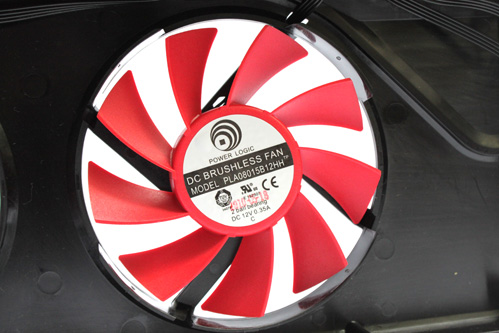
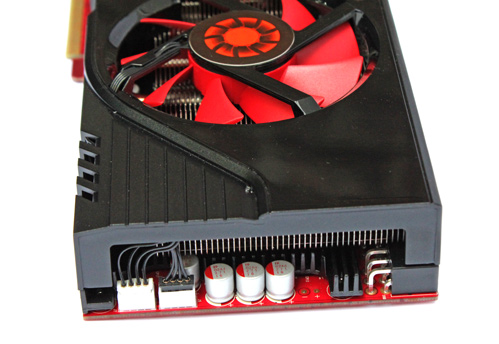
Just like the reference card, the GTX 470 comes with two 6-pin power connectors on the upper side of the card.
OnSemi’s NCP5392 is in charge of voltage regulation and it’s possible to meddle with voltages from software.
